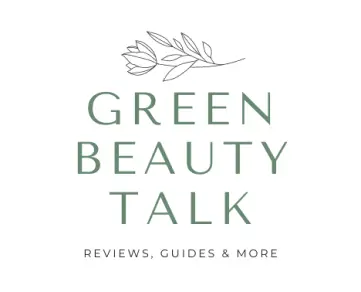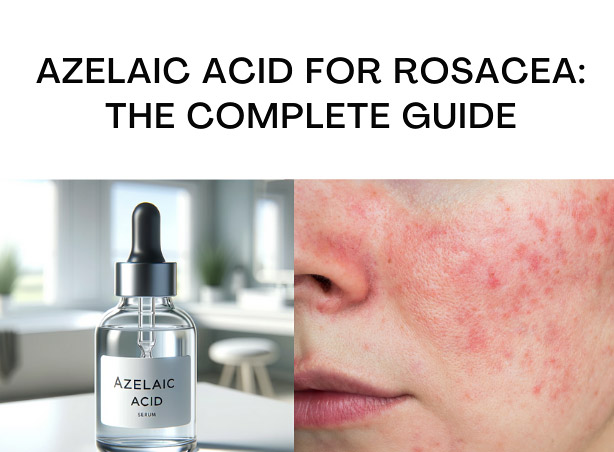
Rosacea is a common skin condition characterized by facial redness and visible blood vessels. The symptoms of rosacea can be quite bothersome, but fortunately, there are effective treatments available. One such treatment is azelaic acid for rosacea. This article will discuss the benefits and use of azelaic acid, providing an overview of how it works to alleviate rosacea symptoms.
Disclaimer: This post contains affiliate links which means I may get a small commission if you purchase a product after clicking on a link. This does not cost you anything. As an Amazon Associate, I earn from qualifying purchases.
Table of Contents
- How Does Azelaic Acid Work for Rosacea?
- Benefits of Azelaic Acid for Rosacea
- How to Use Azelaic Acid for Rosacea
- FAQs on Azelaic Acid for Rosacea
- The Best Azelaic Acid Products for Rosacea
How Does Azelaic Acid Work for Rosacea?
Azelaic acid is a naturally occurring substance derived from grains like wheat, rye, and barley. It has been found to have numerous benefits for the skin, including antibacterial, anti-inflammatory, and antioxidant properties. These attributes make it an effective treatment for rosacea, as it can help reduce redness and inflammation, normalize skin cell growth, and inhibit the production of excess skin pigment.
Research suggests that azelaic acid works for rosacea by targeting the underlying causes of the condition. It has been shown to reduce the presence of Demodex mites, which are tiny organisms that live on the skin and have been linked to rosacea inflammation. Additionally, azelaic acid is believed to help balance the skin’s microbiome, further reducing inflammation and redness.
Benefits of Azelaic Acid for Rosacea
Azelaic acid has been compared to standard rosacea treatments like metronidazole due to the following benefits:
a. Reduces redness and inflammation
Azelaic acid has been proven to be effective in reducing the redness and inflammation associated with rosacea. Its anti-inflammatory properties help to soothe the skin, reducing the appearance of redness and swollen blood vessels.
b. Normalizes skin cell growth and improves skin texture
Azelaic acid helps regulate the growth of skin cells (stops keratinization), which can become abnormal in individuals with rosacea. By promoting healthy skin cell turnover, azelaic acid can help reduce the appearance of bumps and pimples associated with this skin condition.
c. Inhibits excess skin pigment production
One of the symptoms of rosacea is hyperpigmentation, or the darkening of the skin in certain areas. Azelaic acid has been shown to inhibit the production of melanin, the pigment responsible for skin color, thus helping to even out skin tone and reduce the appearance of dark spots.
d. Antibacterial effects
Azelaic acid possesses antibacterial properties that can help reduce the presence of bacteria on the skin’s surface, minimizing the risk of infection and inflammation in rosacea-prone skin. A study published in the Journal of Drugs in Dermatology confirmed its ability to inhibit bacterial protein synthesis: This inhibition disrupts the normal functioning and growth of bacteria, which can contribute to reduced inflammation and improved skin condition in rosacea patients.
e. Balances the skin’s microbiome
Azelaic acid is believed to help balance the skin’s microbiome, further reducing inflammation and redness associated with rosacea. The skin’s microbiome refers to the diverse community of microorganisms (bacteria, fungi, viruses, and mites) that inhabit the skin’s surface. A balanced microbiome supports the skin’s barrier function and helps prevent infections and inflammation.
There is emerging evidence that suggests azelaic acid’s potential role in balancing the skin’s microbiome. A review article published in the Journal of Clinical and Aesthetic Dermatology explored the role of the skin microbiome in rosacea and the potential benefits of azelaic acid in modulating this microbiome. The review suggests that azelaic acid may have a positive impact on the skin’s microbial community, leading to a reduction in rosacea symptoms.
How to Use Azelaic Acid for Rosacea
Azelaic acid is typically applied topically in the form of creams, gels, and foams. It is important to note that before using any new skincare product, it is best to consult with your dermatologist to determine the best treatment plan for your specific case of rosacea.
When applying azelaic acid, it is important to follow these steps:
- Cleanse your face: Before applying any topical treatment, it is important to cleanse your face with a gentle cleanser and pat dry.
- Apply a thin layer: Use a small amount of the product and apply a thin layer to the affected areas of the skin. Be sure to avoid the eyes, nostrils, and mouth.
- Allow time to absorb: Give the product time to fully absorb into your skin before applying any other skincare products or makeup. This usually takes a few minutes.
- Use as directed: Be sure to follow the instructions provided with the product regarding the frequency of use and the length of treatment. If you experience any irritation or discomfort, discontinue use and consult with your dermatologist.
Dosage and Frequency
The dosage and frequency of azelaic acid for rosacea treatment depend on the specific product and the severity of your symptoms. Generally, azelaic acid is applied once or twice daily, as directed by your healthcare provider.
The concentration of azelaic acid in rosacea treatments typically ranges from 15% to 20%. It is important to follow your healthcare provider’s instructions regarding the duration of treatment, which may vary from a few weeks to several months, depending on your individual needs and response to therapy.
Precautions and Side Effects
When using azelaic acid for rosacea, it is important to be aware of potential side effects and precautions. Some common side effects include itching, burning, stinging, or tingling sensations upon application. These side effects are generally mild and tend to subside with continued use.
Severe side effects are rare, but they can occur. Here are some severe side effects that may be associated with the use of azelaic acid for rosacea:
Allergic reactions:
In rare cases, azelaic acid may cause allergic reactions, such as hives, difficulty breathing, swelling of the face, lips, tongue, or throat. If you experience any signs of an allergic reaction, discontinue use immediately and seek medical attention.
Severe skin irritation:
Although mild skin irritation (redness, itching, burning, stinging, or tingling) is common when starting azelaic acid treatment, severe irritation can occur in some individuals. If the irritation is intense, persistent, or worsens, stop using the product and consult a dermatologist.
Worsening of asthma symptoms:
Some reports suggest that azelaic acid may potentially exacerbate asthma symptoms in individuals with pre-existing asthma. If you have asthma and notice a worsening of your symptoms while using azelaic acid, consult a doctor immediately.
Skin discoloration:
While azelaic acid is known to reduce hyperpigmentation, in rare cases, it may cause skin discoloration or hypopigmentation (lightening of the skin). If you notice any unusual skin color changes, stop using the product and consult your healthcare provider.
Keep in mind that these severe side effects are rare, and most individuals using azelaic acid for rosacea will not experience them. However, contact your healthcare provider if you experience any of these symptoms or have concerns about your treatment.
FAQs on Azelaic Acid for Rosacea
How long does azelaic acid take to work on rosacea?
The time it takes for azelaic acid to show noticeable improvements in rosacea symptoms can vary from person to person. Generally, you may start to see positive changes within a few weeks of consistent use.
However, it may take up to several months of the regular application for some individuals to experience optimal results. It is essential to follow your dermatologist’s recommendations and be patient, as the effectiveness of azelaic acid can differ for each person.
Can I use azelaic acid for rosacea while pregnant?
Azelaic acid is considered to be safe for use during pregnancy. It is classified as a pregnancy category B drug by the US Food and Drug Administration, meaning that no harmful effects on the fetus have been observed in animal studies. However, it is always best to consult your healthcare provider before using any new medication or treatment during pregnancy to ensure its safety for both you and your baby.
Can azelaic acid make rosacea worse?
In some cases, people may experience a temporary worsening of rosacea symptoms when they first start using azelaic acid. This may be due to initial skin irritation caused by the product. Generally, these symptoms subside as the skin adjusts to the treatment, and improvements become more noticeable with continued use. If your rosacea symptoms worsen significantly or persist, seek medical advice.
Which is better for rosacea: Azelaic or hyaluronic acid?
Azelaic acid and hyaluronic acid serve different purposes in skincare. Azelaic acid is specifically used to treat rosacea symptoms due to its anti-inflammatory, antibacterial, and skin cell-regulating properties.
Hyaluronic acid, on the other hand, is a humectant that helps retain moisture in the skin and can improve hydration, which may be beneficial for individuals with rosacea. However, hyaluronic acid does not directly address the underlying causes of rosacea.
It is possible to use both azelaic acid and hyaluronic acid in your skincare routine, but it is crucial to consult your healthcare provider to determine the most suitable approach for your specific needs.
Is niacinamide or azelaic acid better for rosacea?
Both niacinamide and azelaic acid can be beneficial for individuals with rosacea. Niacinamide, also known as vitamin B3, has anti-inflammatory properties and can help to strengthen the skin’s barrier function, reducing redness and irritation. Azelaic acid, as mentioned earlier, is effective in reducing inflammation, normalizing skin cell growth, and inhibiting excess pigment production.
The choice between niacinamide and azelaic acid depends on your specific needs and preferences. Some individuals may find success using both ingredients in their skincare routine. Check with your doctor for the best treatment option for your rosacea.
The Best Azelaic Acid Products for Rosacea
Several azelaic acid products can be effective in managing rosacea symptoms. Here are some of the best azelaic acid products for rosacea that you can consider:
The Ordinary Azelaic Acid Suspension 10%: This is a budget-friendly option that contains a high concentration of azelaic acid. It helps to reduce inflammation, redness, and the appearance of blemishes associated with rosacea.
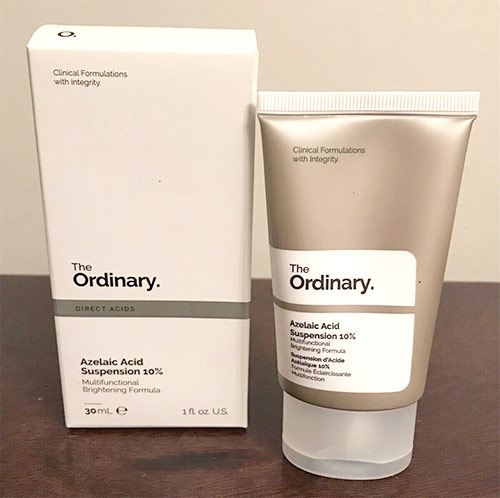
Paula’s Choice 10% Azelaic Acid Booster: This product contains 10% azelaic acid, along with other skin-soothing ingredients, like licorice root extract and salicylic acid. It helps to reduce the appearance of redness and blemishes associated with rosacea.
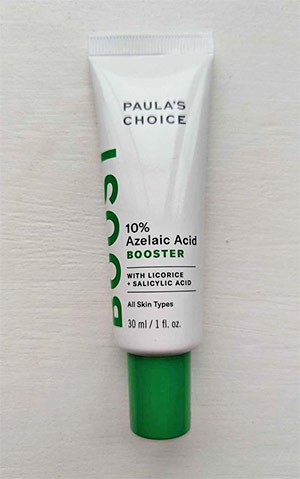
FaceTheory Lumizela Azelaic Acid Serum A15: This serum contains 15% azelaic acid, as well as other key ingredients like niacinamide and vitamin C. It helps to reduce inflammation and redness associated with rosacea, while also brightening the skin and improving its overall texture.
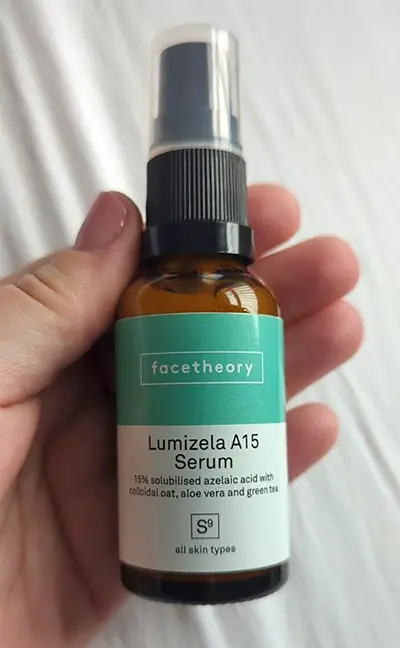
Cos De Baha Azelaic Acid 5% Facial Serum with Niacinamide: This serum contains 5% azelaic acid and niacinamide, making it effective in reducing redness and inflammation associated with rosacea. It also helps to improve the overall texture of the skin and reduce the appearance of blemishes.
Finacea Gel: This is a prescription-strength azelaic acid gel that contains 15% azelaic acid. It is effective in reducing the redness and inflammation associated with rosacea.
More articles about rosacea:
Top 10 The Ordinary Products for Managing Rosacea
Niacinamide for Rosacea: How This Ingredient Helps Tame Your Skin’s Redness
Exfoliation with Rosacea: A Complete Skincare Guide

Petra Nakashian (previously Kravos) is a dedicated natural health and beauty blogger, driven by the loss of her parents to cancer, which led her to meticulously research beauty product ingredients. With over 10 years of experience, her in-depth knowledge has made her a trusted expert in the field. Founder of Be Healthy Now and Green Beauty Talk, Petra recently expanded her expertise with Beauty Insights Hub, exploring a wider range of beauty treatments. Committed to transparency and honesty, her work is a vital resource for navigating the complex world of beauty.
